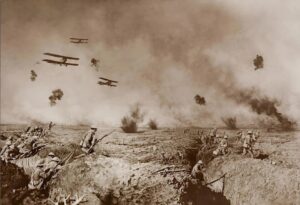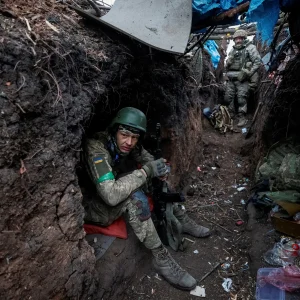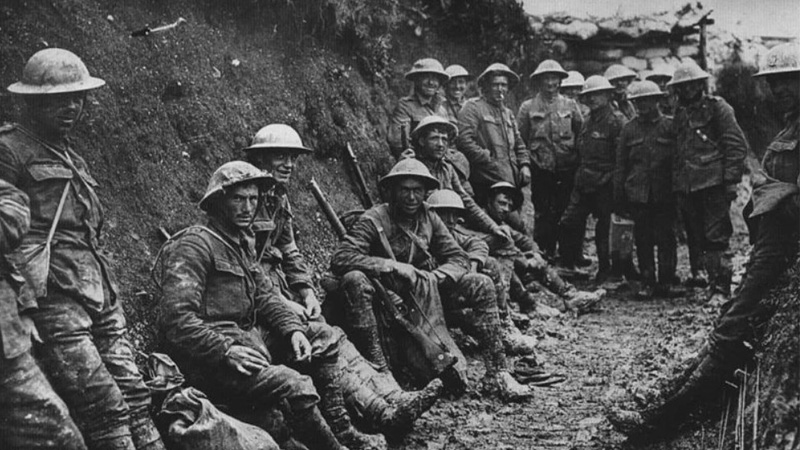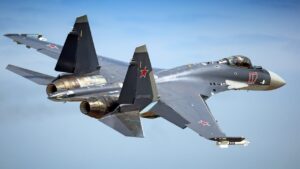Memorandum
Subject: Intelligence Update (S2)
To: All Readers and Interested Parties
From: Greg Smith, Author
Date: 17 AUG 2025

BACKGROUND:
On July 28, 1914, Austria-Hungary declared war against Serbia after a Serbian nationalist assassinated Archduke Ferdinand. Russia and Serbia were allied and already mobilizing in anticipation of a war. Germany had previously pledged support to the Austro-Hungarian Empire and declared war against Russia on the first of August. Since Russia and France were allied, Germany also declared war on France on August third. The Ottoman Empire, an ally of both Russia and Serbia also joined the conflict, expanding the war into the Balkans.
England initially tried to stay out of the war. However, they were concerned about German domination of Europe and decided to pledge support to Belgium. Belgium neutrality was vacated almost immediately as Germany launched an invasion of France through Belgium and the low countries, thus bringing Great Britain into the war. Within a week, all of Europe was at war.
The First World War (1914-1918) was not truly global in scope. European empires fought for control over far-flung territories, including Africa, Asia and the Pacific region. World War I became known as the first “modern war,” as the types of weapons used facilitated industrial-scale destruction and slaughter. The mounted cavalry charges and troops formed in straight battle lines using volley fire from muskets and bolt-action rifles were rendered ineffective.
New technology, new equipment, and new weapons brought frightening levels of destruction. Submarines, airplanes, tanks, long-range artillery, machine guns, and chemical weapons like mustard and chlorine gas replaced fleet actions, cavalry charges, and standing battle formations. Soldiers and civilians alike were massacred indiscriminately. The war very quickly devolved into a stalemate of muddy trenches, barbed wire, mines, and “going over the top” to be slaughtered. Territory gains were measured in yards. The stalemate lasted four long years.
INTELLIGENCE ASSESSMENT:
 Most people believe that warfare has changed since the events of 1914-1918. That would be true in many ways, but less so in many others. The Doughboy and Tommy of World War I would understand and empathize with the Russian and Ukrainian soldiers of 2025. Both conflicts are stalemates of slaughter, largely fought from trenches. Both armies measure their gains in small increments, and exchange territories back and forth. New technology and new weapons have made slaughter more efficient and effective. Thousands of people die on both sides for no appreciable outcome. The war in Ukraine is the modern equivalent of Flanders, the Somme, and Passchendaele of 1914-18.
Most people believe that warfare has changed since the events of 1914-1918. That would be true in many ways, but less so in many others. The Doughboy and Tommy of World War I would understand and empathize with the Russian and Ukrainian soldiers of 2025. Both conflicts are stalemates of slaughter, largely fought from trenches. Both armies measure their gains in small increments, and exchange territories back and forth. New technology and new weapons have made slaughter more efficient and effective. Thousands of people die on both sides for no appreciable outcome. The war in Ukraine is the modern equivalent of Flanders, the Somme, and Passchendaele of 1914-18.
In WWI, generals and political leaders eagerly sent millions to the slaughter. Their egos wouldn’t allow them to think of any other solution apart from destroying the enemy. When America joined the war, the British and French leaders saw the Americans merely as additional replacements for their losses, a way to keep the ranks full. None of the leaders engaged in the conflict could see any way to end the war other than to continue throwing larger numbers of men across no-man’s land. The Doughboy and Tommy of 1918 would see the same conditions today in Ukraine.
Breaking a stalemate requires a new strategy, new ways of thinking, new tactics, and new engagement. Although it is highly unlikely that direct negotiations between Russia and the US will result in an end to the war in the near-term, it is a necessary step on the path to resolution. Starting the discussions with the belligerents involved on both sides is a necessary first step. No cease-fire and no peace can be negotiated without both sides engaging in discussion.
Negotiation with a duplicitous partner can be tricky. Security guarantees will be needed. Putin has shown that he cannot be trusted, and he has also shown his desire to bring the former Soviet states back under Russian domination. Putin was not satisfied with merely annexing Crimea from Ukraine in 2014. A peace deal that gives Russia control over the territory they have taken since 2022 may merely delay the next invasion without guarantees of strong and committed partners, especially in Europe. One need only look to the Munich agreement of 1938 as the example, when UK Prime Minister Chamberlain declared “Peace in our time,” while waving a treaty signed by Hitler. Less than a year later, the world was once again at war.
If the current negotiations are successful in producing a cease-fire, that does not necessarily mean the end of hostilities. Any deal will almost certainly involve a timetable that provides weeks or months for implementation. One key to a deal will be the ownership of territory, including Crimea, which was annexed from Ukraine in 2014. Any long-term peace will probably require some form of territory exchange. Count on both sides increasing attacks to seize as much territory as possible prior to a cease fire. Once implemented, expect both sides to use the period of peace to rebuild, rearm, and reinforce their positions.
What is the alternative to negotiation? Continued fighting, continued stalemates, continued economic destruction, like 1917. The European nations, concerned with Russian aggression on their frontiers, will continue to provide weapons and material support to Ukraine. America will continue selling weapons to the European nations, who then provide them to Ukraine. Meanwhile, China, Iran, and even North Korea will continue to provide weapons to Russia. How long before a stalemate results in escalation through desperation?
War has changed, or has it? In war, the only one who wins is the one who does not participate.
CURRENT OPERATIONS UPDATE:
Killer’s Reign is now with the editor. In the meantime, I am still rewriting Sleeper Cell. I am also starting to lay out the plot for my WWII novel and screenplay based on Special Operations Executive (SOE) and the Office of Special Services (OSS) actions behind the lines. Stay tuned for updates!
COMMUNICATIONS UPDATE:
All my novels draw upon real-world events. My stories examine the possibilities and ask what-if. Although fiction, the events and characters that drive the narrative reflect both current reality and my own experiences.
I invite you to visit my website regularly for more information on characters, storylines, and other interesting details.
https://gregsmithonline.com/
Duck and Cover!
Greg Smith
Author
cc:
S1 Personnel
S3/5 Operations & Plans
S6 Communications





